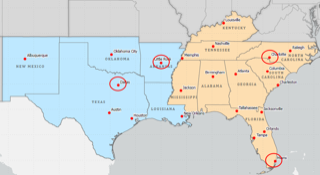Our North Florida Section Emergemcy Coordinator, Arc Thames is
issuing
a Monthly challenge to send a VOICE Radiogram.
For the next serveral months Arc is issuing a challenge to all hams
within our
section to send a Radiogram using phone/voice over one of
our local or section nets. Each month there will be a new request for
information to send.
Here is a link to the
North Florida QST where the
current months challenge is posted. You will
need to scroll down to locate the section from Arc in the newsletter to
find the challenge. Please be sure to include
your
county name.
The section website, arrl-nfl.org, also has a net listing. Many
of these nets have a traffic representative/liaison that can
pass your traffic up to a section net to allow the traffic to reach
Arc.
We do not have a local VHF traffic net so you would need to be able to
use HF. The Florida Phone Traffic Net is held daily at 0700 on 3940MHz.
If you do not have HF, then maybe we could work something out if you
are
interested in participating.
I have posted a mostly blank Radiogram
here with
Arc's info filled in.
(His last name is pronounced TIMS).
- 201
Briefing pdf odt
- 202
Objectives pdf odt
- 203
Organization pdf odt
- 204 Assignment List
pdf odt
- 205 Radio Comms
pdf odt
- 205A Radio Assingments
pdf odt
- 206 Medical
pdf odt
- 208 Safety Plan
pdf odt
- 211 Check In
pdf odt
- 212 Vehicle Inspection
pdf odt
- 213 General
Message
pdf odt
- 213rr Request Resources
pdf odt
- 214 Activity Log
pdf odt
- 215 Planning
pdf odt
- 221 Demobilization Check Off
pdf odt
- 309 Communications Log
pdf odt
ARRL - Radiogram
FSD 218
ARRL - Numbered Radiogram (FSD
3)
Columbia
County Comm Plan
North Florida Comm
Plan
Marion
County Comm Plan
Alachua
County Comm Plan

